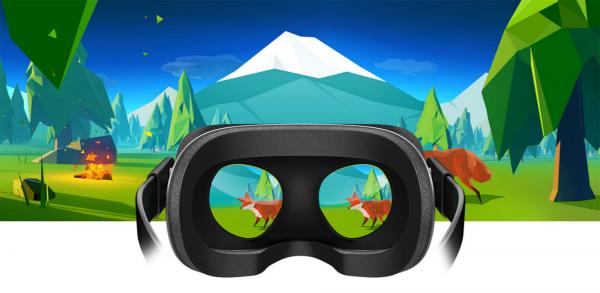Results from the fourth annual Games Developers Conference (GDC) State of the Industry Survey have been released, showing the top trends of the video game industry based on feedback from over 2,000 developers. Some of the biggest takeaways include how virtual reality development has more than doubled to 16 percent, compared to 7 percent of studios working on VR projects last year. Alongside that figure is an ever growing emphasis on eSports, with nearly 90 percent of respondents believing that eSports is a sustainable long-term business.
 Simon Carless, Executive Vice President of The Game Developers Conference (taking place March 14-18 in San Francisco), talks to [a]listdaily in-depth about the survey findings and how this year’s conference will heavily feature VR and eSports themes.
Simon Carless, Executive Vice President of The Game Developers Conference (taking place March 14-18 in San Francisco), talks to [a]listdaily in-depth about the survey findings and how this year’s conference will heavily feature VR and eSports themes.
As it turns out, even with the rising popularity of VR, PC and mobile game development remains dominant, but both are showing slightly lower numbers compared to the previous year. Furthermore, development for both the PlayStation 4 and Xbox One rose by one percent, while projects for Nintendo’s Wii U and 3DS saw a drop of one percent.
Although VR development is still at its infancy, enthusiasm for the technology remains relatively high. Carless notes that, “We asked developers if VR/AR is a sustainable business, and exactly 75 percent said yes, while 25 percent of people said no.”
When asked whether or not they believe these devices would exceed the (roughly) 40 percent adoption rate of game consoles, “27 percent of respondents said they didn’t believe VR/AR hardware would ever surpass that level of adoption.” One percent believed that it could happen by 2018, while 44 percent expected it to happen by 2026, and 54 percent didn’t think VR would surpass consoles until at least 2030.
“I think developers expect that VR will be a gradually growing market, partly because the first generation VR devices – at least the higher end ones — are going to be quite expensive,” Carless explains. “But that’s something that games development is used to. If you look back at some of the early consoles, I think some of them were as expensive as $600. So, it’s certainly not abnormal for early game hardware to be expensive.”
Hardware adoption will be the chief challenge for developers looking to make virtual reality games, and it could be a long uphill climb. According to the survey, “38 percent of respondents predicted that VR/AR hardware would be in 10 percent of U.S. households by 2020. 86 percent figure it’ll happen by 2030, and roughly 9 percent figure it will never happen.” It should be noted that the survey was taken before the Oculus Rift’s price announcement, so while some views may have changed with the news, Carless explains that many of the questions were geared for the long term.
Currently, it looks like the Oculus Rift is the most favored device among developers, with 20 percent of respondents stating that they anticipating they will develop their next VR game for it. In comparison, only 9 percent said the PlayStation VR. “Part of that is because the Rift is much more open and available dev kit,” said Carless. “So, just because developers think they’re going to make more games for Oculus VR, that doesn’t necessarily mean it will be the most popular device.” He also notes that, “Things like PlayStation VR may be helpful, because there are already a lot of core gamers who are interested in VR.”
 When asked which VR/AR devices interested developers most, the survey results broke down as follows:
When asked which VR/AR devices interested developers most, the survey results broke down as follows:
- 40 percent said they were interested in Oculus Rift
- 25.9 percent said the HTC Vive
- 25.6 percent were interested in the PlayStation VR
- 25.3 percent responded HoloLens
- 15 percent showed interest in the Samsung Gear VR
Another major focus at GDC will be on eSports. Carless explains that eSports are a big deal at the conference, even though it may be a difficult goal for many developers to reach, since it requires quite a bit of investment and infrastructure. “Only 15 percent of developers surveyed said that they’re working on a game they consider to be an eSport.” At the same time, “88 percent of respondents said that eSports is a long-term sustainable business,” an 8 percent increase from the 79 percent of respondents who affirmed the same position last year.
The survey findings conclude with mobile game development numbers that indicate that support between the leading mobile platforms is closer than ever, with 55.1 percent of respondents developing games for Android, and 56.3 percent for iOS. While the competition is close, they represent a drop from the 2015 survey, which showed a Android and iOS support at 59.1 percent and 56.3 percent respectively, indicating that some may have dropped out of mobile development in the past year.

